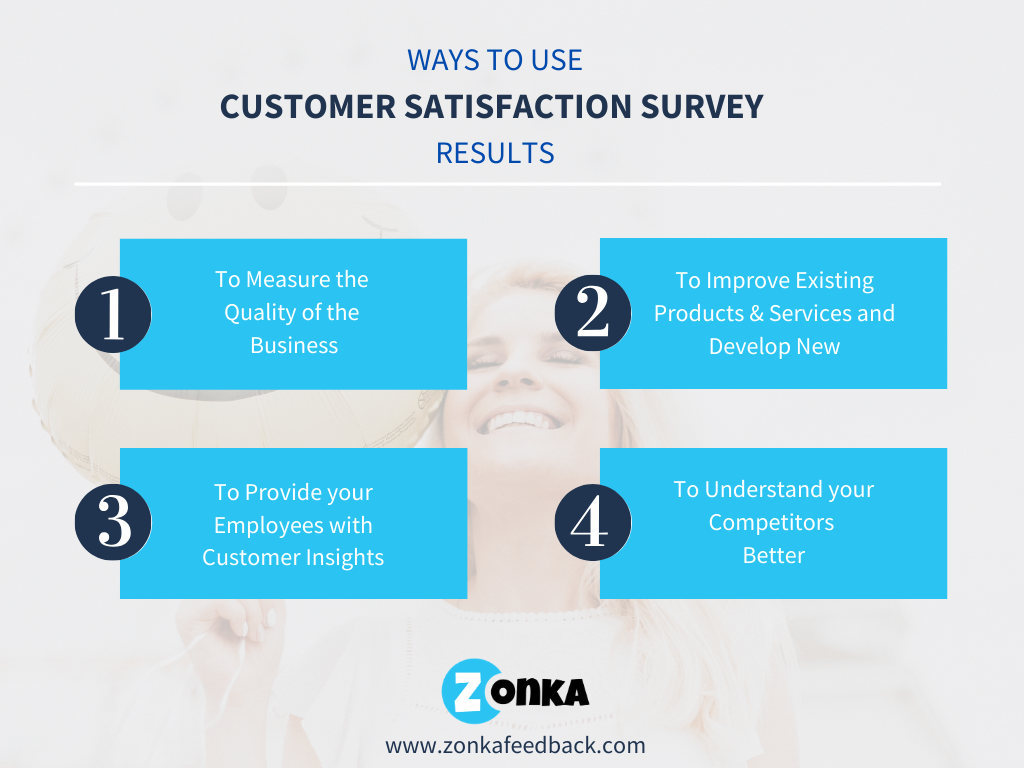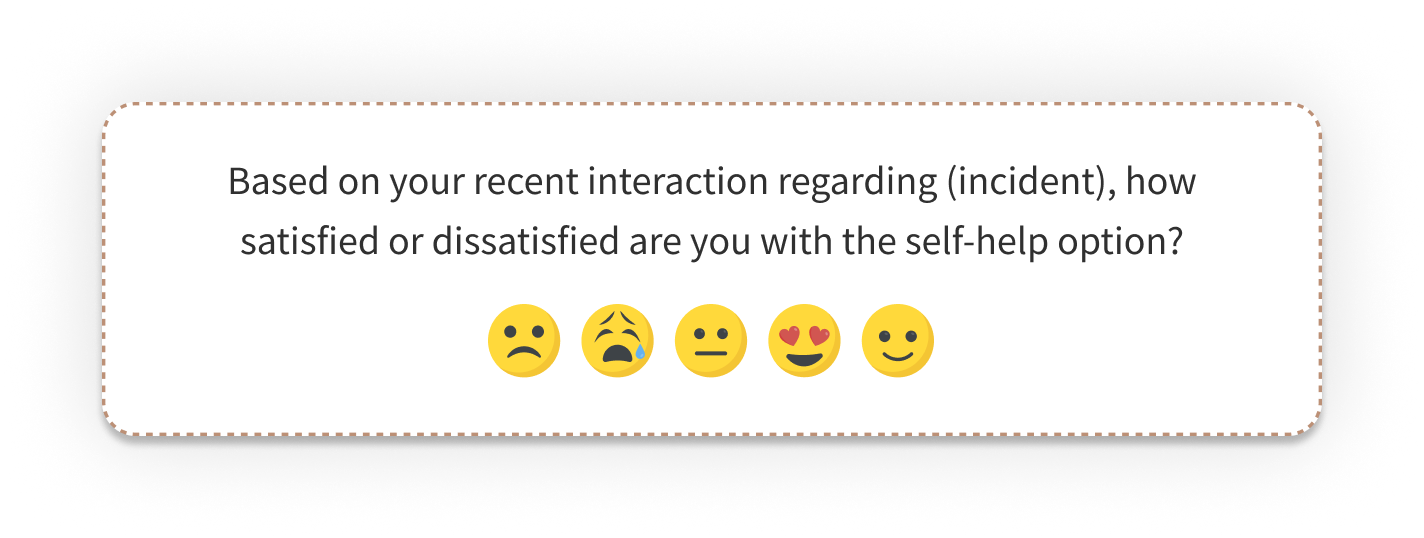Regardless of what business you run, you need to continuously do significant efforts to provide your customers with a positive experience and satisfaction throughout their customer journey. Focus on delivering high customer satisfaction along with exceptional customer experience to your customers to achieve milestone business growth.
How? Whether you have a small, medium, or large business, a Customer Satisfaction Survey (CSAT) is the best way to find out what your customers really feel about your products, services, and brand experience. Are they satisfied, happy with your products, services, and customer experience?
TL;DR
- CSAT surveys measure how satisfied customers are after interactions.
- Use both transactional and relational CSAT surveys for a holistic view.
- Analyze results to improve products, train employees, and understand competitors.
- CSAT score data is not just a performance metric—it’s a strategy development tool.
Measure Customer Satisfaction and Improve Customer Experience🔥
Create customized surveys and feedback forms and take real-time feedback from your customers at all touchpoints.

What to Do With CSAT Results: Understanding Customer Satisfaction Survey
Customer Satisfaction or CSAT is the Customer Feedback Metric that enables you to gauge the satisfaction level of your customers. In this mechanism, you can effortlessly track and monitor your customers’ experiences after a particular transaction or at touchpoints like post-purchase, post-delivery or post a meal.
Customer Satisfaction is calculated from the simple CSAT survey question - “How satisfied were you with your experience?” Through this metric customers range their satisfaction level either on the scale ranges 1 – 3, 1 – 5, or 1 – 10 or on the scale of agree/disagree scales, stars or smileys. The CSAT score measures how happy or content customers are with a specific interaction or experience. CSAT score cannot only boost the customer satisfaction rate but also provides an opportunity to improve the organizations’ products and services.
Customer Satisfaction Surveys offer you a good blend of Open-Ended Questions and Close-Ended Questions that make your survey response-friendly. Close-ended questions bring customer-powered data and open-ended questions help you to know the reason for your CSAT score.
Remember one thing, the significance of conducting the CSAT survey is zero, until and unless it is not being converted into a proactive and the customer-driven approach. So, if you want to levitate the conversion rate of your business, then start deploying your Customer Satisfaction Survey (CSAT) Results effectively.
Now, most of the entrepreneurs like you have a question in your mind that despite conducting CSAT surveys why am I not getting appropriate results?
No doubt that you are effectively using CSAT surveys in your business but are you deploying its results in the right direction that helps you to achieve better results?
No, many times it happens that companies instead of using csat questionnaire results to identify the areas and scopes of improvement, they are majorly using it as a key indicator to measure the performance of their customer service team.
Again!! CSAT survey data give you a clear understanding of the satisfaction level your customers have received after using your products or services or after specific interaction with you as a brand.
Analyzing CSAT score results helps businesses gain insights into customer needs and expectations. This will help you to know the strengths, weaknesses, opportunities, and threats associated with your business. It has no direct relationship with your employees’ performance.
The only relation that exists between CSAT score results and your employees is that they can use it effectively to drive better results and improve business growth. Additionally, CSAT score results can strengthen the business relationship with customers by addressing their survey feedback and concerns.
So, look through 5 effective ways to use Customer Satisfaction survey results to amplify the growth of your business.
Why Customer Satisfaction Matters
Customer satisfaction is at the heart of every successful business. It’s not just about meeting customer expectations—it’s about exceeding them to create memorable experiences that foster customer loyalty and long-term success.
Satisfied customers are more likely to become loyal customers, returning to your business time and again, and even recommending your brand to others. This loyalty translates directly into increased revenue, stronger brand reputation, and a competitive edge in the marketplace.
Measuring customer satisfaction is essential for understanding what your customers truly value and expect from your business. By regularly tracking customer satisfaction scores (CSAT scores), businesses can identify areas that need improvement, tailor their offerings to better match customer preferences, and make informed, data-driven decisions.
On the other hand, neglecting customer satisfaction can lead to dissatisfied customers who may quickly switch to competitors, resulting in lost revenue and missed growth opportunities.
In today’s fast-paced business environment, prioritizing customer satisfaction isn’t just a nice-to-have—it’s a necessity. Businesses that consistently measure and improve customer satisfaction are better positioned to customer retention, attract new customers, and achieve sustainable business growth.
What is CSAT? (Customer Satisfaction Score)
CSAT score is a metric used to understand how satisfied customers are with a specific interaction, product, or service. It’s often asked using a simple question like:
“How satisfied were you with your experience?”
Customers respond using a scale (e.g., 1–5, 1–10, stars, smileys, or thumbs).
How to Calculate CSAT Score
CSAT Score (%) = (Number of positive responses / Total responses) × 100
Types of Customer Satisfaction Surveys
To effectively measure customer satisfaction, businesses can choose from a variety of customer satisfaction surveys, each designed to capture different aspects of the customer experience.
- Transactional surveys are used immediately after a specific interaction, such as a purchase or a customer service call, to assess satisfaction with that particular key moment. These surveys help businesses gain valuable insights into key touchpoints along the customer journey and quickly identify areas that may need attention.
- Relational surveys, in contrast, focus on the overall relationship between the customer and the business. These surveys are typically conducted at regular intervals and provide a broader view of customer sentiment, helping businesses understand long-term satisfaction and loyalty trends.
- Product surveys are another important tool, allowing businesses to measure customer satisfaction with specific products or services. By gathering feedback on product features, usability, and performance, companies can identify strengths and areas for improvement, ensuring their offerings align with customer preferences.
The effectiveness of customer satisfaction surveys also depends on the types of questions used. Likert scale questions, multiple choice questions, and open-ended questions each offer unique advantages.
Likert scale questions make it easy to quantify customer satisfaction levels, while multiple choice questions streamline the survey process and provide clear, actionable data. Open-ended questions, on the other hand, allow customers to share their thoughts in their own words, uncovering insights and revealing pain points that may not be captured by closed-ended questions.
By combining different types of customer satisfaction surveys and question formats, businesses can gain a comprehensive understanding of customer needs, measure CSAT score accurately, and identify areas for improvement. This approach empowers businesses to develop targeted strategies that enhance customer satisfaction, drive loyalty, and support long-term business success.
4 Effective Ways to Use Customer Satisfaction Survey Results

1. To Measure the Quality of your Business
You can conduct transactional CSAT surveys that help you to gauge the real-time satisfaction level of your customers after specific interactions like post-purchase, post-call or ticket raised, post-order confirmation, etc. These survey data provide the insights into every nook and cranny of your business efforts. Once you get the results for your products, services, and customer experience (no matter good or bad) do a quick review of your results. Analyzing survey responses is crucial to identify trends and areas for improvement. Additionally, evaluate customer satisfaction with the key features of your product or service to pinpoint strengths and weaknesses.
Immediately note down the concerns and issues of customers from different customer interaction touchpoints. Segregate all customer issues into Recurring (common and general issues) and Personal (issues based on the personal opinion of the customers). Now, immediately distribute these segregated concern lists among your customer service teams and tell them to quickly follow up with the unsatisfied customers either through email or phone call and resolve their issues before they churned out of the business, ensuring an immediate response to address their concerns.
You can also use Customer Satisfaction Software to streamline your survey management efforts. Right from creating CSAT surveys to distributing to monitoring to analyzing results, CSAT software automates and manages everything efficiently.
2. To Improve Existing Products & Services and Develop New
Product & service quality has always been the first most priority of customers while choosing any brand. If your product or service is quality-grade, then your customers can pay you high and likely to remain loyal to your brand. Improving the customer's experience leads to higher satisfaction and loyalty. If you want to lure customers to your conventional shop or online business, you need to make your product or service more customer-oriented. How?
For this, you need to ask your customers, ask them to give feedback on your products and services. This practice of taking customer feedback may provide you with some negative customer feedback but it will work as constructive criticism for you that helps you to improve your products and services. You can also engage your customers by posing different relationship surveys questions like How likely are you to continue to choose/repurchase/repeat or How likely are you to recommend us to a friend/associate? This process contributes to customer happiness and long-term engagement.
You can deploy both positive and negative feedback results to identify both strengths and weaknesses associated with your products or services. And when you follow up with your customers, you get a deep insight into their preferences and buying behaviour.
This further helps you to improve existing products and services and develop new products and services that are strong enough to entice your customers. Tracking overall customer satisfaction through these surveys helps guide product and service development.
You can automate the trigger of the Customer Satisfaction Survey at various touchpoints including post-purchase, post-delivery, and post-transaction using custom APIs and Webhooks to integrate your survey tool with your system. Using customer feedback surveys at these points allows you to collect actionable data to improve your offerings.
3. To Provide your Employees with Customer Insights
Measuring employee performance on the basis of the customer satisfaction score (CSAT Score) results is not the right practice. But customer satisfaction results are highly beneficial for your employees if it is deployed in the right way. Monitoring customer satisfaction levels helps employees understand performance trends and areas for improvement. CSAT score results not only provide your employee with a large platform to understand and engage with your business but also enable them to:
-
Get deep insights into customers issues and their behaviour
-
Understand the marketing and customers trends
-
Plan and strategize the closing of the negative feedback loop
-
Use open ended feedback to uncover detailed customer concerns and gather qualitative insights
When you share the CSAT scores, responses (positive & negative) of your customers with your product development, marketing analysts, and customer support team, they will collaboratively work to quickly identify the pain points of customers and find some solutions to fix their issues, improving the overall customer service experience through coordinated action. It is also important to respond quickly to customer issues to ensure their concerns are addressed in a timely manner. This will further help you to improving customer satisfaction and experience of your unhappy customers and turn them into happy and satisfied customers before they churned from your business.
When it comes to managing CSAT surveys among your employees, various Customer Feedback Survey Tools that are incorporated with the smart response Inbox enables you to view each customer feedback, add tags, convert them into tasks and work closely with your team to take actions.
It also provides your team members with real-time reporting & analysis capabilities to monitor every customer feedback closely and take some corrective measures.
4. To Understand your Competitors Better
To survive in a competitive market, it is important for a business to keep an eye on their competitors. Competitor Analysis is another great source to do SWOT (Strengths, Weaknesses, Opportunities, and Threats) analyses of your business.
Benchmarking your customer satisfaction scores against industry standards allows you to evaluate your performance and identify areas for improvement. Thus, it can be done easily by surveying customer sentiment.
When you ask any survey questions based on customer sentiments including experience, or satisfaction from those customers who prefer other brands, they will provide you with the strong points and features of your competitive brand.
Based on the analysis, your product development team can make necessary adjustments in the products and services to make it better. Additionally, consider other metrics alongside CSAT score for a comprehensive view of customer satisfaction and business performance.
Customer Satisfaction Score results will not only help you to learn about product & service enhancement or improving employee engagement but also help you to understand the deployment of those important business-related dynamics that will help you to take your business to the next level. Aligning CSAT survey results with business objectives ensures that your strategies drive meaningful improvements. Acting on feedback results can also lead to increased customer loyalty and long-term business growth.
Real-World Example
A SaaS company sent post-chat CSAT surveys and noticed 25% of users marked support as “neutral.” After analyzing feedback, they introduced a chatbot for first-level support and saw CSAT rise from 70% to 87% in three months.
Best Practices to Improve CSAT
-
Keep surveys short and timely (1–2 questions post-interaction)
-
Close the feedback loop with follow-ups
-
Respond to every negative response within 24–48 hours
-
Use visuals (charts, tags) to analyze data faster
-
Reward feedback contributors (even small gestures help)
-
Share results regularly with teams and leadership
Final Thoughts
Customer Satisfaction isn’t just a number—it’s a growth strategy. When used well, CSAT surveys offer priceless insights into customer behavior, product expectations, and competitive positioning.
If you haven’t already, it’s time to move beyond collecting feedback—and start using it as fuel to grow your business.




.png)







